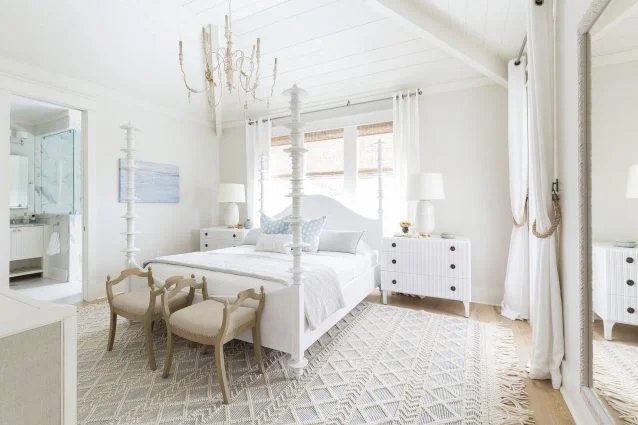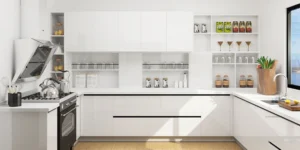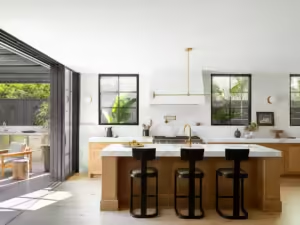Shoji White: The Ultimate Guide to This Elegant Paint Color?

Shoji White is a classic and sophisticated paint color that has gained immense popularity in interior design. This soft and subtle hue, which falls within the off-white family, brings warmth and versatility to any space. With its unique blend of undertones and ability to complement various design aesthetics, Shoji White has become a go-to choice for homeowners and designers alike. In this article, we’ll explore everything you need to know about Shoji White, its characteristics, uses, and how to incorporate it into your home for stunning results.
What is Shoji White?
Shoji White is a paint color from Sherwin-Williams, known for its balanced, neutral properties that suit a variety of settings. It sits between white and beige, making it an off-white color with subtle undertones. While it may appear simple at first glance, Shoji White has complex layers that add depth and interest to any room. It’s particularly noted for its warm undertones, which help create a cozy and inviting atmosphere.
Undertones of Shoji White
One of the defining aspects of Shoji White is its undertones. Unlike more superb whites with blue or gray tones, Shoji White is infused with warm undertones, such as a hint of cream or beige. This subtle warmth helps to soften spaces and create a more welcoming environment. These undertones make Shoji White an excellent choice for a variety of rooms, from living areas to bedrooms.
Warm vs. Cool Undertones
- Warm Undertones: Create a comfortable, inviting atmosphere. Shoji White’s warm undertones make it ideal for rooms that need a touch of coziness.
- Cool Undertones: A more modern and crisp feel can be contrasted by pairing with Shoji White for balance.
How Shoji White Appears in Different Lighting
Lighting plays a crucial role in how Shoji White appears on your walls. The color can look different under natural light compared to artificial light.
Natural Light
Shoji White leans towards its warm, creamy side in spaces with ample natural light, enhancing the sense of brightness and openness. The light reflects off the color to create a soft glow that can make the room feel larger and more welcoming.
Artificial Light
Under artificial lighting, Shoji White can appear slightly richer or more muted depending on the type of light bulb used. Warm incandescent bulbs may enhance its cozy undertones, while cooler LED lights can make it appear more neutral or even bring out faint grayish notes.
Tips for Choosing the Right Lighting:
- Warm-toned bulbs for a cozier, homier feel.
- Cool-toned bulbs for a balanced and more neutral look.
Best Uses for Shoji White in Your Home
Shoji White is a highly versatile color used in various areas throughout your home. Below are some of the best applications for this elegant paint color:
Living Rooms
Shoji White can transform your living room into an inviting space with warmth and sophistication. It pairs well with traditional and modern furnishings, making it a perfect backdrop for diverse design styles.
Bedrooms
Shoji White is an excellent choice for bedrooms for a serene and relaxing atmosphere. Its soft undertones create a peaceful environment conducive to rest. Pair it with light, airy linens and wooden furniture for a harmonious look.
Kitchens
Shoji White works wonderfully in kitchens, especially with natural wood tones or light-colored cabinets. It brightens the space without being too stark, creating a cozy yet polished feel.
Bathrooms
A bathroom painted in Shoji White looks clean and timeless. The color’s warm undertones prevent it from feeling cold or sterile, making the space feel luxurious and spa-like.
Hallways and Entryways
Shoji White is perfect for entryways and hallways. It reflects natural light and makes narrow spaces appear broader and more open.
Complementary Colors to Pair with Shoji White
When using Shoji White, choosing complementary colors that enhance its subtle beauty is essential. Here are some color pairings that work exceptionally well:
Neutral Tones
- Greige (gray-beige): Adds sophistication and depth.
- Soft taupe: Provides a warm, harmonious look.
Bold Accents
- Deep navy: This creates a striking contrast and adds a touch of elegance.
- Forest green: Complements the warm undertones of Shoji White while bringing in a natural, earthy feel.
Pastels
- Pale blue or green: Introduces a fresh, airy vibe that pairs beautifully with Shoji White’s warmth.
Styling Tips for Shoji White Interiors
To create a stunning space with Shoji White as the primary paint color, consider these styling tips:
Layering Textures
Use a variety of textures in your décor to enhance the warmth and depth of Shoji White. Soft throws, woven rugs, and natural fiber curtains add an element of coziness.
Accent Walls
Create an accent wall in a deeper shade, such as charcoal gray or deep olive, to create contrast and make Shoji White stand out even more.
Wooden Elements
Pairing Shoji White with wooden furniture or exposed beams helps accentuate its warm undertones, making the space feel even more inviting.
Comparing Shoji White with Similar Colors
When choosing Shoji White, it’s helpful to compare it with other popular off-white colors to see which one best suits your space.
Shoji White vs. Alabaster
Alabaster is another well-loved Sherwin-Williams off-white with warmer tones. While Shoji White has slightly stronger beige undertones, Alabaster is lighter and closer to true white, offering a brighter, more neutral option.
Shoji White vs. White Dove
White Dove by Benjamin Moore is a soft, warm white with qualities similar to Shoji White. However, Shoji White tends to be brighter and more neutral. Shoji White, by contrast, leans more beige, giving it a slightly richer appearance.
Shoji White vs. Swiss Coffee
Swiss Coffee is known for its cozy warmth and creamy undertones. It shares similarities with Shoji White but typically reads warmer and slightly more saturated.
Is Shoji White Right for You?
Shoji White is a fantastic choice if you’re looking for an off-white paint colour that strikes the perfect balance between warm and neutral. Its versatility makes it suitable for virtually any space in your home, from living rooms and bedrooms to kitchens and bathrooms. If you love a cosy, welcoming atmosphere with a touch of sophistication, Shoji White may be your ideal choice.
Conclusion
Shoji White is more than just an off-white paint; it’s a timeless, versatile hue that can transform any space into a warm and inviting haven. Whether you’re looking to brighten your living room or create a peaceful bedroom retreat, Shoji White offers the perfect balance of warmth and neutrality. Proper lighting and complementary colours can elevate your interior design. Remember Shoji White for its understated elegance and endless design potential if you consider a paint update.



